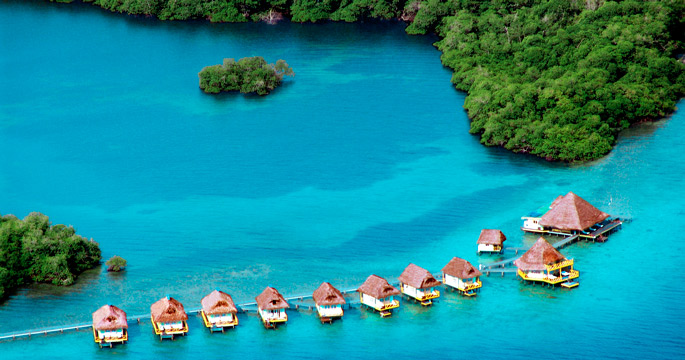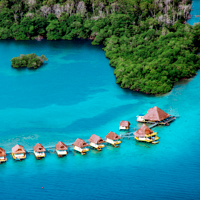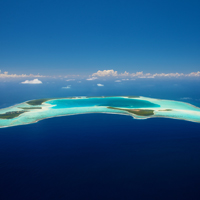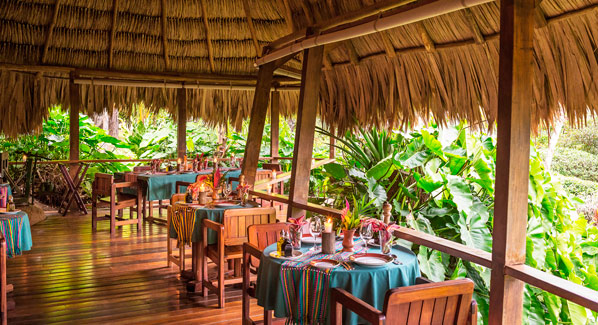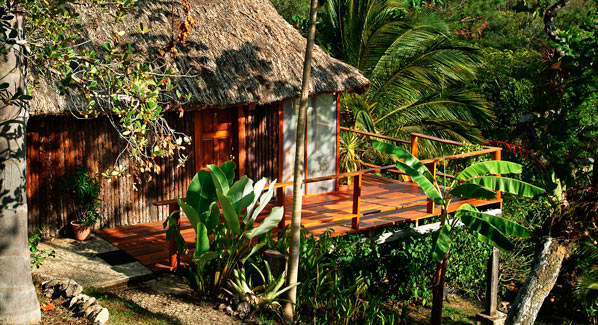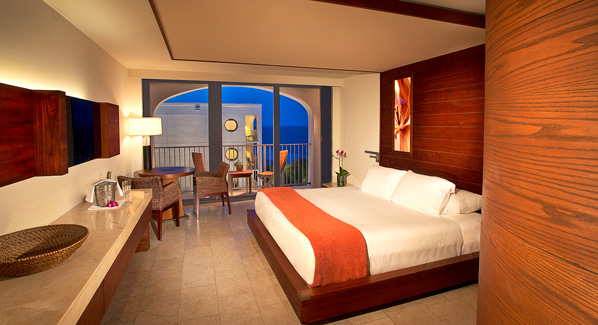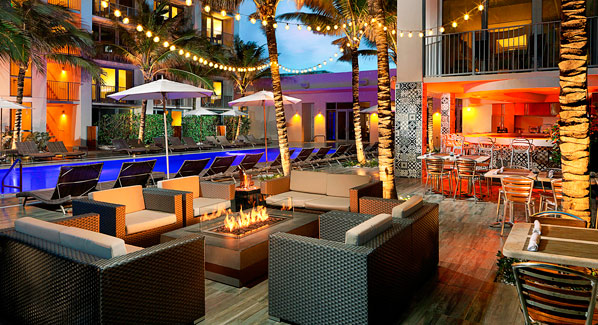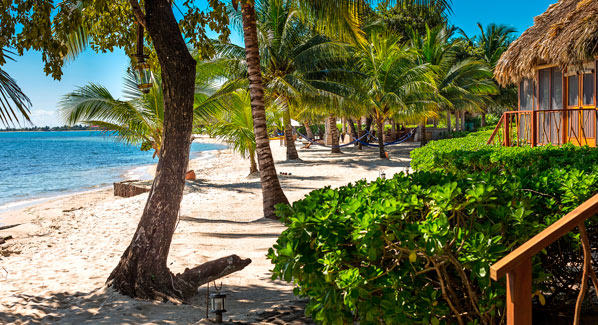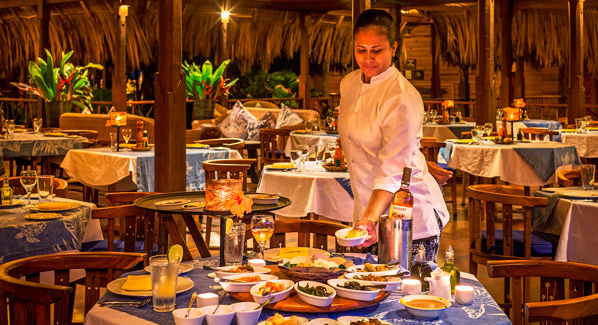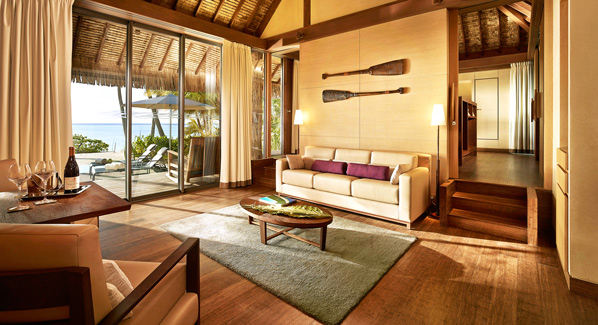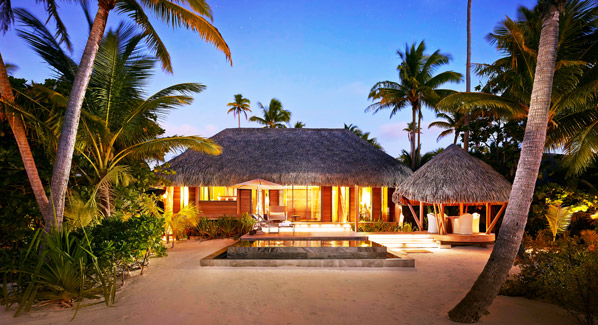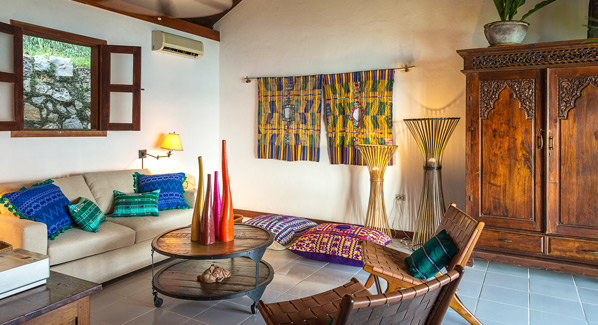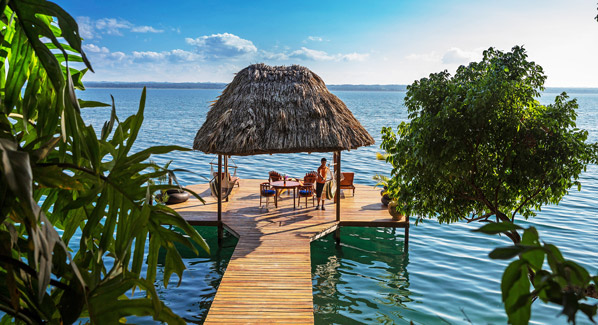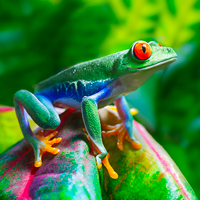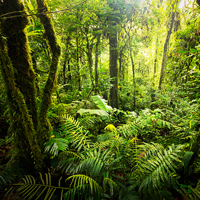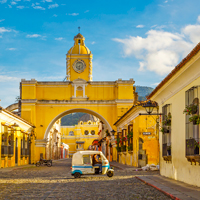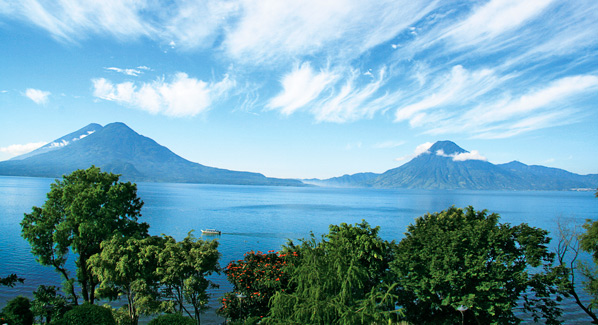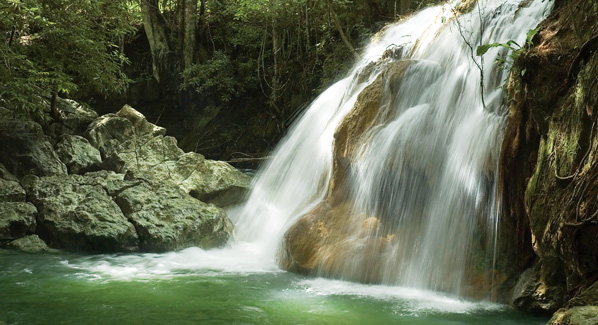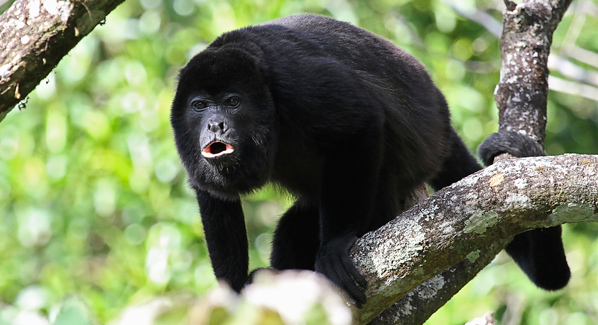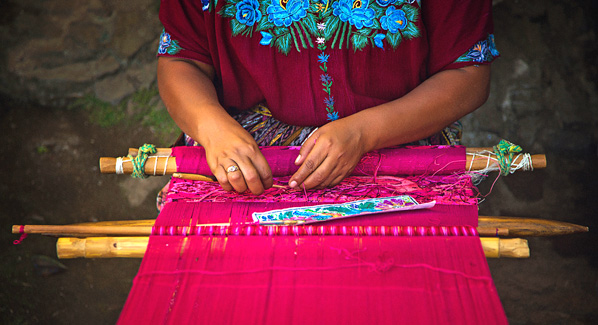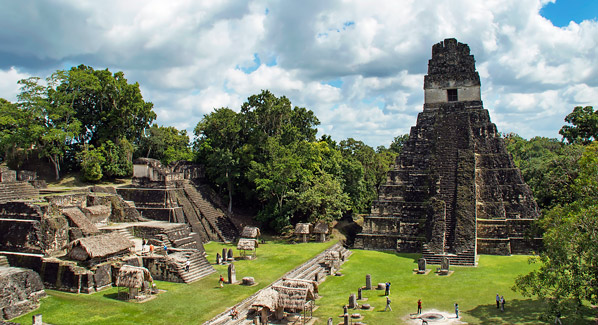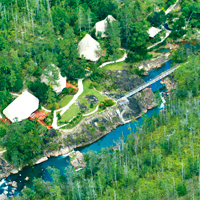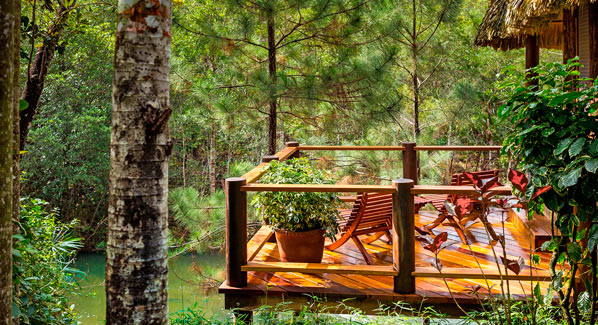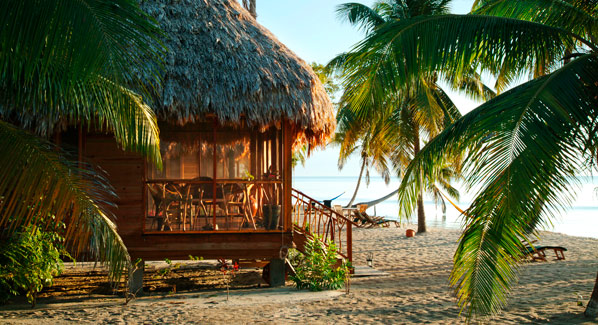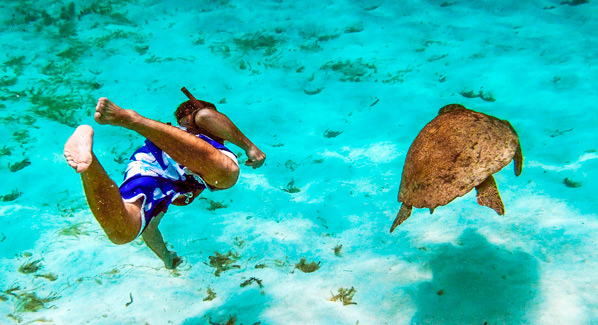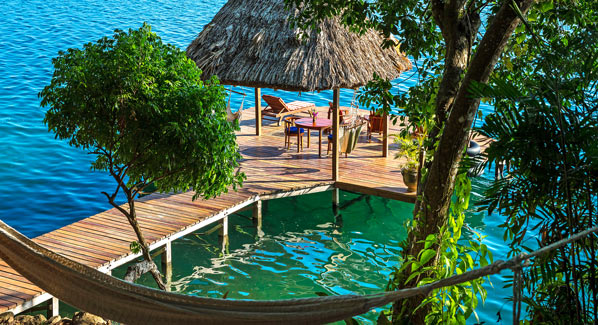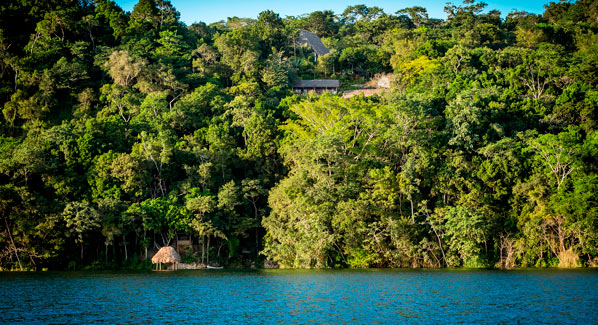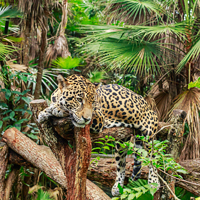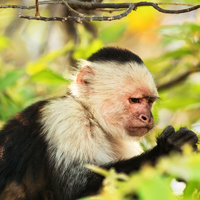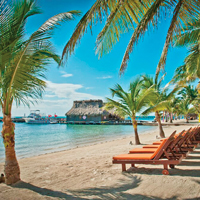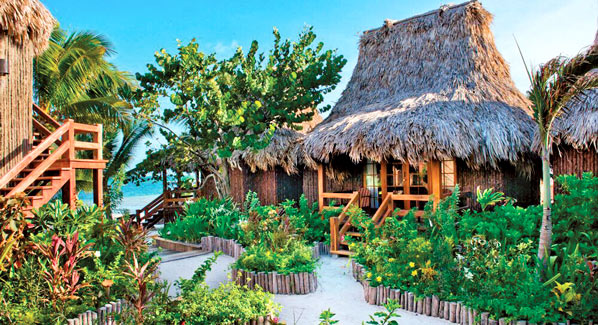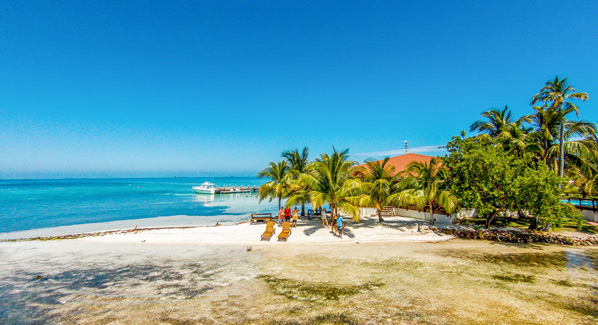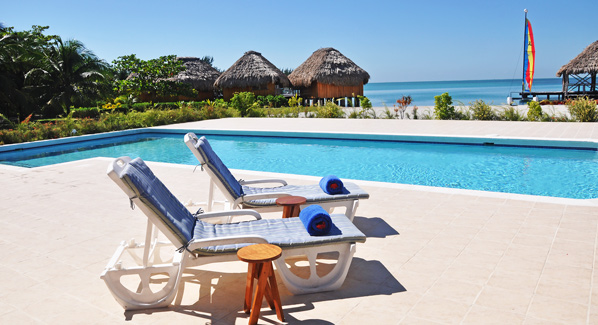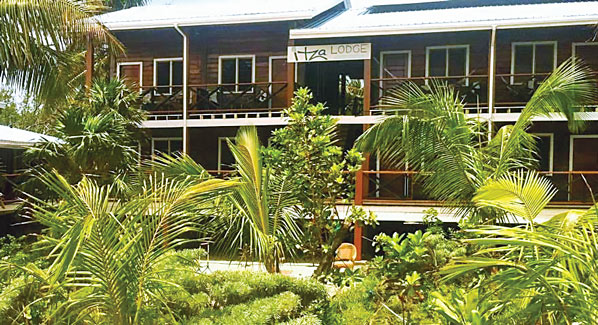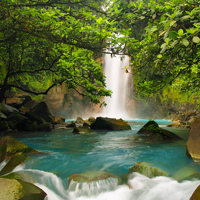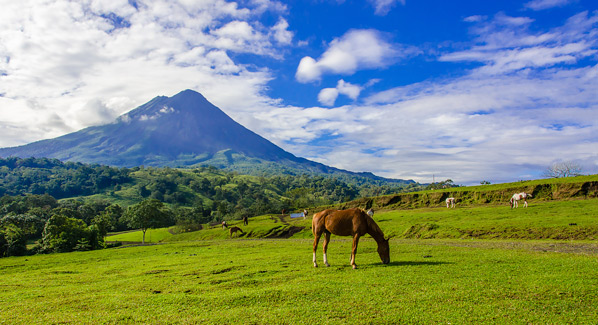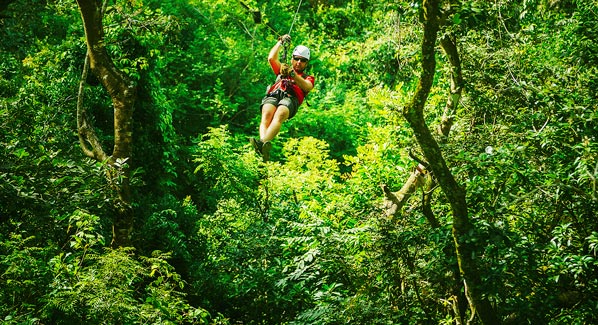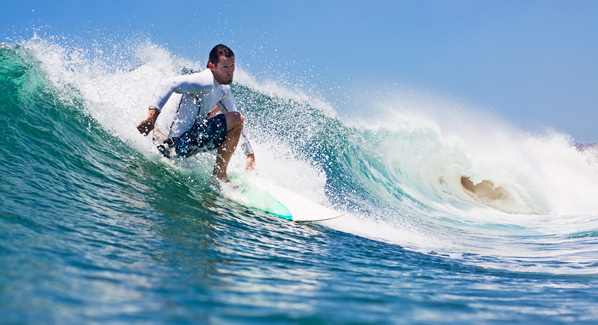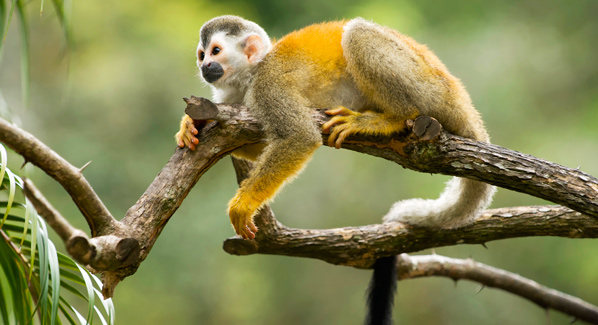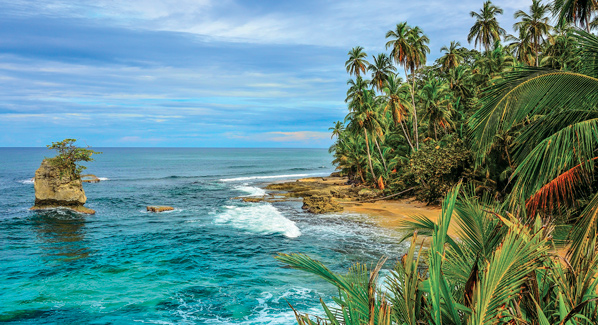Panama’s Bocas del Toro archipelago is one of the last undeveloped coastlines in the Caribbean. Sandwiched between the surf and the clear waters of an expansive inland lagoon, these small, emerald-clad islands are the site of unique off-grid resorts that blend traditional know-how with modern eco-friendly technologies to deliver a comfortable yet authentic guest experience. Some add the extra element of over-water architecture. Here are three favorites.
Punta Caracol Acqua Lodge
Off-grid, solar-powered and supporting a privately funded mangrove reserve, the Punta Caracol Acqua Lodge is an eco resort by any standard. The property includes nine thatch-roofed over-water bungalows fabricated from natural building materials that includes native woods and plants, clays, leafs, bamboo, and wild cane. The design is traditional, but the infrastructure is thoroughly modern. In addition to solar electrical and hot water generation, the lodge employs gas refrigeration technology and a waste treatment system that makes use of state-of-the-art aerobic systems for micro-processing and sewage treatment. Each of the nine bungalows has two-story floor plans, with upstairs sleeping lofts and 360-degree water views from wraparound porches.
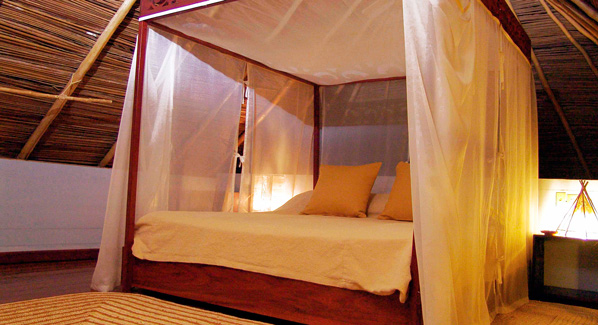
The second story sleeping lofts at Punta Caracol Acqua Lodge are fitted with Colonial style four post beds and netting, and seating under a traditional roof made from natural materials. Photo: Punta Caracol
An all-inclusive room rate includes breakfasts, candlelight dinners and access to snorkeling, kayaking and beach excursions. The lodge is located on the western shore of Isla Colon, several miles removed from Bocas Town, but easy to reach by water taxi. Daily activities can include boat tours of the Bocas del Toro Archipelago, island tours by bicycle, motorcycle or four- wheeler, surfing trips and scuba diving trips, and visits to coastal rainforest preserves. At the end of the day, the west facing porches of the bungalows are the place to be as the sun sets over the waters of Almirante Bay.
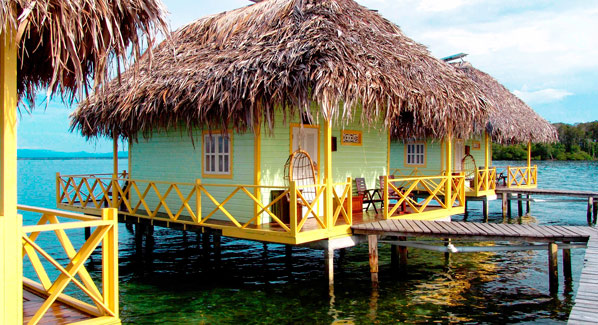
Bungalows at Punta Caracol Acqua Lodge feature wraparound porches that deliver sweeping water views. Note the solar panels set atop the traditional thatch roofs. Photo: Punta Caracol
Eclypse de Mar Acqua Lodge
This off-grid resort is located along the northern shores of Bastimentos Island, which is known for its unspoiled natural beauty and scenic beaches. With just six over-water bungalows, it is one of the area’s smaller resorts, but it is also one of the most highly regarded. Bungalows follow traditional local designs that promote natural cross ventilation, with penca thatch roofs that create convective cooling. Amenities include private bathrooms with hot water, ceiling fans, hammocks, chaise lounges, wireless Wi-Fi and complimentary room service. Each Caribbean-style bungalow features glass- viewing panels in the floors and private decks with swim-up access. Families and groups can book the resort’s villa, which provides accommodations for six, and sits on the second story of the main lodge.
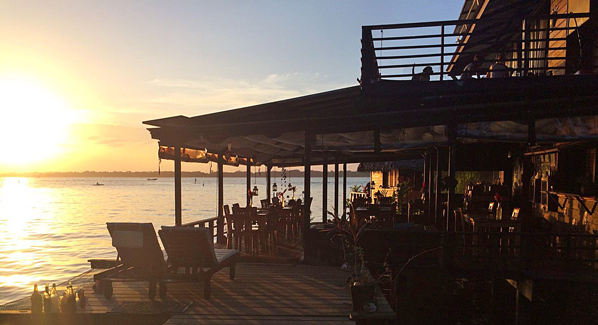
The waterfront restaurant at Eclypse de Mar Aqua Lodge delivers spectacular sunset views and Caribbean breezes. The menu showcases seafood and fresh local produce. Photo: Eclypse de Mar
The regional gateway of Bocas Town is just a ten-minute boat ride across the lagoon, but the property is private and is sequestered within coastal forests. A natural spring on Eclypse de Mar’s own nature reserve provides ample fresh water, and the lodge uses a special low-flow water system to make best use of this resource. All waste is treated and sorted for recycling, and Eclypse de Mar has assumed responsibility for the care and maintenance of nearby coastal areas and mangrove forests. Paths lead from the resort to the island’s interior, where rainforests and wetlands are home to a wide range of tropical birds, flowering plants and wildlife.
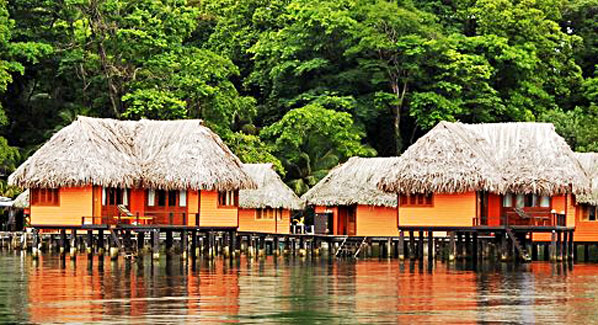
The distinctive thatch roofs of the Eclypse de Mar Acqua Lodge are based on a traditional regional design that creates natural cooling while also adding a touch of exotic appeal. Photo: Eclypse de Mar
Azul Paradise Panama
The newest eco-lodge in Panama’s Bocas del Toro area is a family owned collection of bungalows located on a remote and pristine white sand beach. Each of the 10 bungalows at Azul Paradise are designed to take full advantage of this idyllic setting, with features like private outdoor showers, and outdoor living areas with lounge seating areas over the water. Ladders lead right from the sundeck into the shallows. Interiors welcome sea breezes to create cool comfort, with king-sized beds and private bathrooms with walk in shower. To take full advantage of the setting, glass floor panels are positioned to take in views of the marine life below.
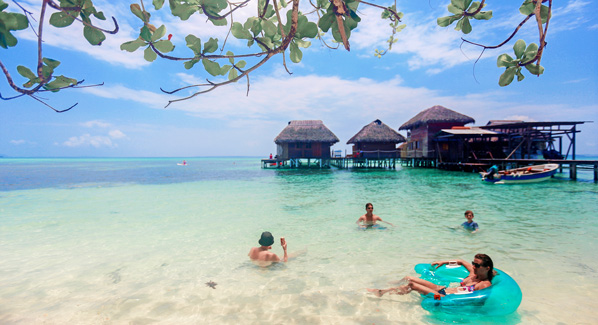
White sands and clear waters are a hallmark of the Azul Paradise eco lodge. Outdoor living areas at each over-water bungalow give guests immediate access to the water. Photo: Azul Paradise
Azul Paradise is located on the more secluded southern coast of Bastimentos Island, which is a half-hour boat ride from the docks of Bocas Town. The resort includes a tiki bar with a beachfront grill, and a large clubhouse with a lounge area, private bar, and restaurant. Guests can swim or snorkel right from their rooms or the beach, and make use of kayaks, paddleboards and private lounge chairs on the beach. Additional off- property activities include daily scheduled tours, deep-sea fishing, dolphin encounters and surfing. At the end of the day, dinners can be served on private decks.
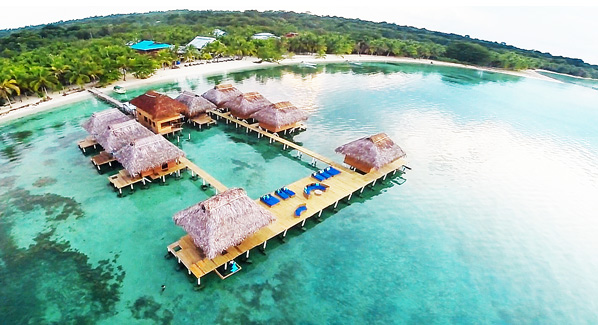
A remote beach on the southern coast of Panama’s Bastimentos Island provides an ideal setting for the native-style bungalows of the Azul Paradise lodge. Photo: Azul Paradise

